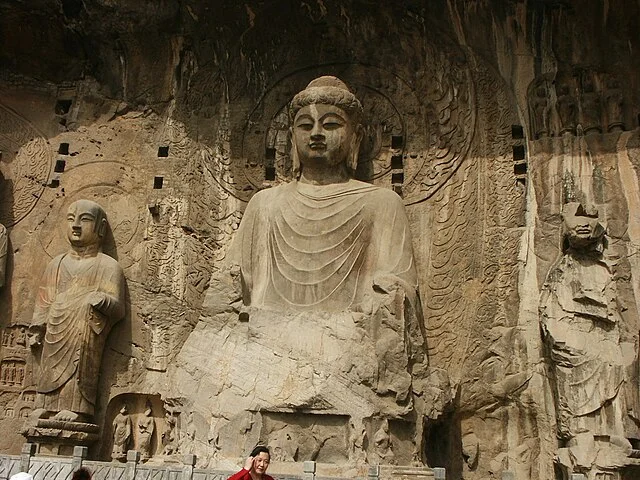The Hongqingsi Grottoes are a group of ancient Buddhist cave temples located in Gansu Province, China. Carved into the cliffs of the eastern Qilian Mountains, these grottoes date back to the Tang Dynasty (618–907 AD). The site consists of over 100 caves featuring intricate carvings and religious iconography, reflecting the Buddhist culture of medieval China. These grottoes offer significant insight into Chinese Buddhist art, architecture, and history.
Get your dose of History via Email
History and Origin
The Hongqingsi Grottoes were constructed during the Tang Dynasty when Buddhism thrived in China. Buddhist monks and artisans created these caves as places for worship and meditation. The region’s strategic location along the Silk Road allowed the transmission of Buddhist art and ideas. This cultural exchange heavily influenced the style and iconography seen in the grottoes.
The grottoes continued to be important religious sites during the Song (960–1279 AD) and Ming (1368–1644 AD) dynasties. Over time, however, many caves fell into disrepair due to natural erosion and lack of maintenance.
Architecture and Design
The architecture of the Hongqingsi Grottoes follows traditional Buddhist cave-temple designs. Each cave contains a central Buddha statue, with smaller statues of bodhisattvas, monks, and disciples carved into the surrounding walls. The caves vary in size, with some housing large statues and others small niches for personal worship.
The carvings and paintings inside the grottoes are detailed and colorful, depicting scenes from Buddhist scriptures. The artistic style combines traditional Chinese elements with influences from Central Asia, a result of cultural interactions along the Silk Road.
Religious Significance
The Hongqingsi Grottoes hold deep religious significance for Buddhists. Monks used these caves as places for meditation and prayer, seeking enlightenment through isolation and contemplation. Many of the carvings represent the life of the Buddha and Buddhist teachings, which helped educate the local population about the religion.
The religious significance of the grottoes diminished during the Ming Dynasty as Buddhism began to decline in China. However, the site still attracts pilgrims and visitors interested in its history and religious art.
Preservation and Challenges
The preservation of the Hongqingsi Grottoes poses several challenges. Erosion, weathering, and human activity have caused damage to many of the caves and their artwork. Over the centuries, the loss of original colors and deterioration of carvings has become a significant issue.
In recent years, Chinese authorities have undertaken preservation efforts to protect the site. Conservation projects focus on stabilizing the caves and restoring damaged artwork. Despite these efforts, preserving the grottoes remains an ongoing challenge due to their remote location and environmental exposure.
Conclusion
The Hongqingsi Grottoes are an important cultural and religious site that reflects the spread of Buddhism in medieval China. The caves, carvings, and sculptures offer valuable insight into the religious, artistic, and architectural developments of the time. Despite ongoing preservation challenges, the Hongqingsi Grottoes continue to serve as a significant historical monument, illustrating the lasting influence of Buddhism on Chinese culture.
Source:

